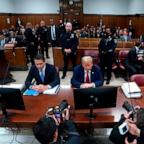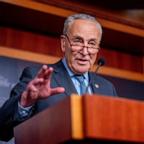The Iranian Regime's Fear of the People
The Beginning of the end? Iran's opposition movement gains ground.
Jan. 5, 2010 — -- The ruler in his palace was at a loss. He felt helpless, alone and full of misgivings. Should he attack on this day in December, a day when his people were taking advantage of Ashura, an important Shiite festival, to take to the streets in the millions and demand his abdication in angry chants? Wasn't it imperative that he demonstrate uncompromising brutality and order his soldiers to shoot into the crowd, if he hoped to continue as leader?
The ruler, a man who felt chosen by history, was all too familiar with the symbolic power of the events surrounding Ashura. On that day, the faithful commemorate the martyrdom of Imam Hussein, the grandson of the Prophet Muhammad, who fearlessly confronted superior forces 1,300 years ago in the Battle of Karbala, giving impetus to the rise of a religion dedicated to rapt suffering. The ruler of Iran apparently sensed that it would be more than a tactical mistake to resort to violence on this day. Indeed, it would be an incident of sacrilege that he would be unable to survive. Instead, he forbade his military leaders and intelligence officials from creating what could have been a bloodbath.
This atypical leniency benefited Shah Mohammad Reza Pahlavi on that December day in 1978, but by then there was little left to save. Five weeks later, the people drove him out of office. The revolution of the masses had prevailed.
On Feb. 1, 1979, millions of Iranians celebrated the return of Ayatollah Ruhollah Khomeini from exile in France. He promised a just political system anchored in religion and characterized by strict laws. When the Islamic Republic was proclaimed on April 1, 1979, Khomeini's triumph was complete.
Ashura is the day on which history was written and probably will always continue to be written. History was also written in December 2009, when Iranians' long-simmering dissatisfaction with their rulers reached a new -- and, at the very least, prerevolutionary -- dimension, when violence and counter-violence dominated the streets of three of Iran's biggest cities, Tehran, Tabriz and Isfahan. When even the regime could no longer deny that people had been killed during the protests. When security forces shot at protesters and hundreds were arrested nationwide. And when bodies disappeared and their family members were not even able to bury their dead within the time period prescribed by their religion.
The government's actions proved that Ayatollah Ali Khamenei, Khomeini's political heir, was not even making allowances for religious sentiments any more. "Even the regime of the shah respected Ashura," said reformer Mahdi Karroubi, the most prominent dissident next to opposition leader Mir Hossein Mousavi. During the 2009 Ashura festival, in which protesters from all levels of society took to the streets, the last bond between the rulers and the ruled was severed. As a result, the Islamic Republic lost its religious legitimacy in the eyes of many Muslims.
But does this also signify an admission of complete failure on the part of those in power? Does it mean that the theocracy faces inevitable, perhaps even immediate, collapse? Is it truly just a matter of time before the regime of Ayatollah Khamenei is finished? Only one thing is certain, namely that the clashes have reached a new dimension that is immensely dangerous for both sides. Never has there been so much popular dissatisfaction with the leadership in Tehran, and never before has such a broad front of people throughout the country fought with such determination against the "dictator" Khamenei and his ally, President Mahmoud Ahmadinejad.




